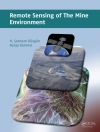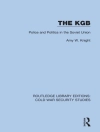Common among moths is a mate-finding system in which females emit a pheromone that induces males to fly upwind along the pheromone plume. Since the chemical pheromone of the domesticated silk moth was identified in 1959, a steady increase in the number of moth species whose pheromone attractants have been identified now results in a rich base for review and synthesis.
Pheromone Communication in Moths summarizes moth pheromone biology, covering the chemical structures used by the various lineages, signal production and perception, the genetic control of moth pheromone traits, interactions of pheromones with host-plant volatiles, pheromone dispersal and orientation, male pheromones and courtship, and the evolutionary forces that have likely shaped pheromone signals and their role in sexual selection. Also included are chapters on practical applications in the control and monitoring of pest species as well as case studies that address pheromone systems in a number of species and groups of closely allied species.
Pheromone Communication in Moths is an invaluable resource for entomologists, chemical ecologists, pest-management scientists, and professionals who study pheromone communication and pest management.
Mục lục
LIST OF CONTRIBUTORS
PART ONE
1 Reminiscence of the Early Days
WENDELL L. ROELOFS
2 Pheromones: Reproductive Isolation and Evolution in Moths
JEREMY D. ALLISON AND RING T. CARDÉ
3 Variation in Moth Pheromones: Causes and Consequences
JEREMY D. ALLISON AND RING T. CARDÉ
4 Evolutionary Patterns of Pheromone Diversity in Lepidoptera
CHRISTER LÖFSTEDT, NIKLAS WAHLBERG, AND JOCELYN G. MILLAR
5 Sexual Selection
MICHAEL D. GREENFIELD
6 Genetic Control of Moth Sex Pheromone Signal and Response
KENNETH F. HAYNES
7 Contextual Modulation of Moth Pheromone Perception by Plant Odors
TEUN DEKKER AND ROMINA B. BARROZO
8 Toward a Quantitative Paradigm for Sex Pheromone Production in Moths
STEPHEN P. FOSTER
9 Molecular Biology of Reception
WALTER S. LEAL
10 Moth Sex Pheromone Olfaction: Flux and Flexibility in the Coordinated Confl uences of Visual and Olfactory Pathways
THOMAS C. BAKER AND BILL S. HANSSON
11 Moth Navigation along Pheromone Plumes
RING T. CARDÉ
12 Male Pheromones in Moths: Reproductive Isolation, Sexy Sons, and Good Genes
WILLIAM E. CONNER AND VIKRAM K. IYENGAR
PART TWO
13 Small Ermine Moths: Role of Pheromones in Reproductive Isolation and Speciation
MARJORIE A. LIÉNARD AND CHRISTER LÖFSTEDT
14 Possible Reproductive Character Displacement in Saturniid Moths in the Genus Hemileuca
J. STEVEN Mc ELFRESH AND JOCELYN G. MILLAR
15 The European Corn Borer Ostrinia nubilalis: Exotic Pest and Model System to Study Pheromone Evolution and Speciation
JEAN-MARC LASSANCE
16 Divergence of the Sex Pheromone Systems in “Oriental” Ostrinia species
JUN TABATA AND YUKIO ISHIKAWA
17 Utetheisa ornatrix (Erebidae, Arctiinae): A Case Study of Sexual Selection
VIKRAM K. IYENGAR AND WILLIAM E. CONNER
18 Pheromone Communication, Behavior, and Ecology in the North American Choristoneura genus
PETER J. SILK AND ELDON S. EVELEIGH
19 The Endemic New Zealand Genera Ctenopseustis and Planotortrix: A Down-Under Story of Leafroller Moth Sex Pheromone Evolution and Speciation
RICHARD D. NEWCOMB, BERND STEINWENDER, JÉRÔME ALBRE, AND STEPHEN P. FOSTER
20 Evolution of Reproductive Isolation of Spodoptera frugiperda
ASTRID T. GROOT, MELANIE UNBEHEND, SABINE HÄNNIGER, MARÍA LAURA JUÁREZ, SILVIA KOST, AND DAVID G. HECKEL
21 Pheromones of Heliothine Moths
N. KIRK HILLIER AND THOMAS C. BAKER
PART THREE
22 Monitoring for Surveillance and Management
D. M. SUCKLING
23 Pheromones as Management Tools: Mass Trapping and Lure-and-Kill
ALAN CORK
24 Mating Disruption of Moth Pests in Integrated Pest Management: A Mechanistic Approach
MAYA EVENDEN
INDEX
Giới thiệu về tác giả
Jeremy D. Allison is Research Scientist with Natural Resources Canada, Great Lakes Forestry Centre.Ring T. Cardé is Distinguished Professor of Entomology and occupies the A.M. Boyce Chair at the University of California, Riverside.












